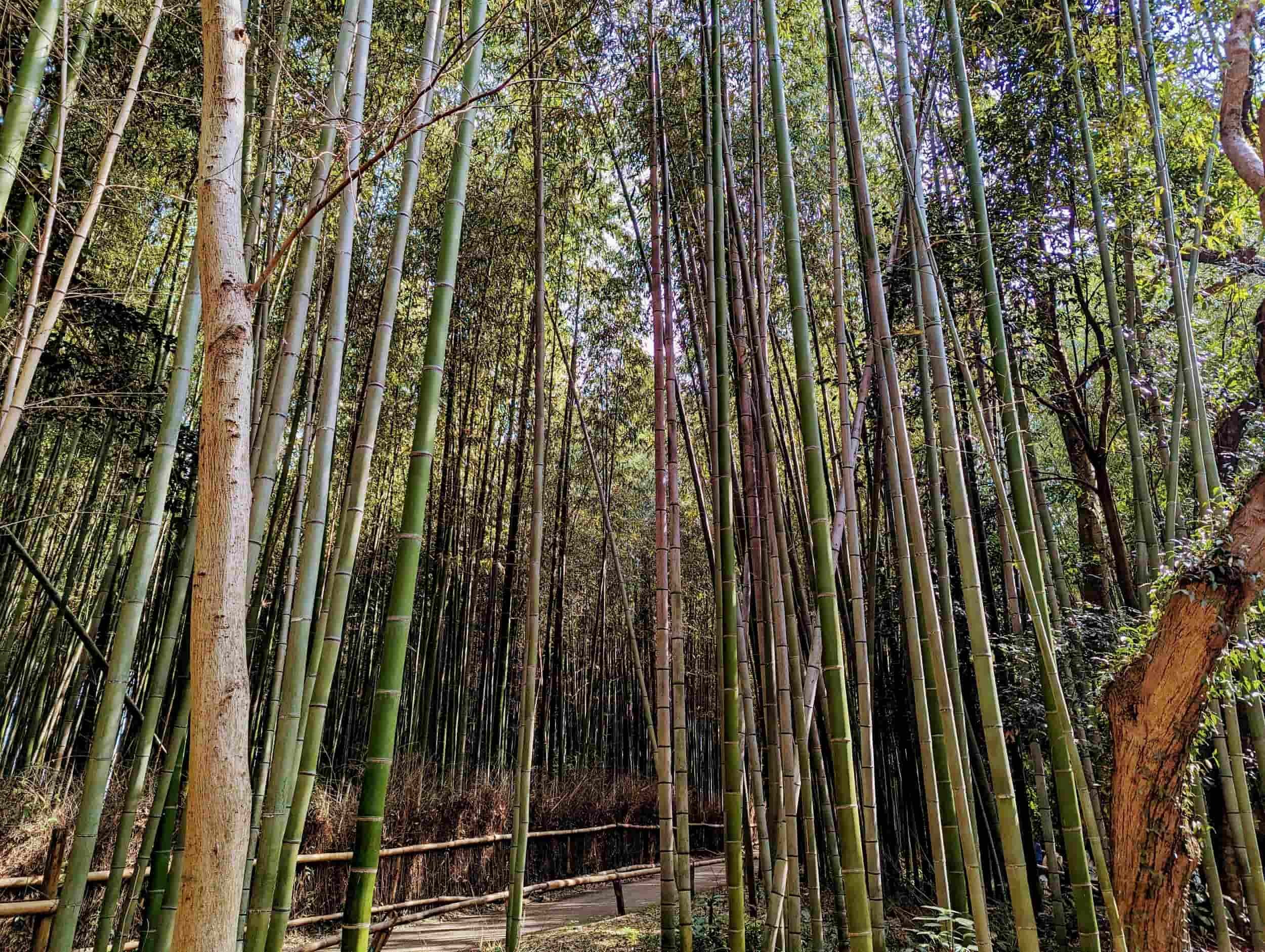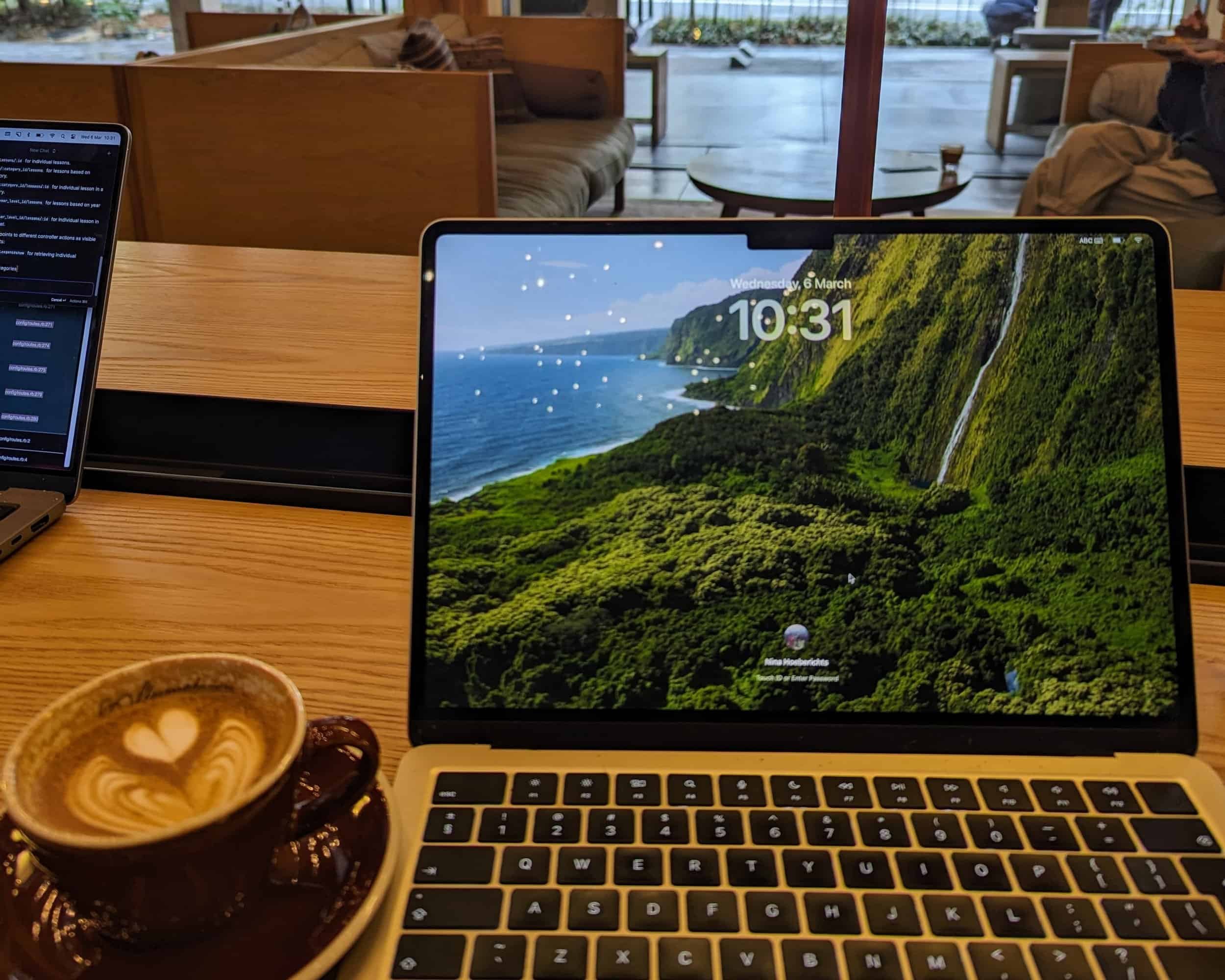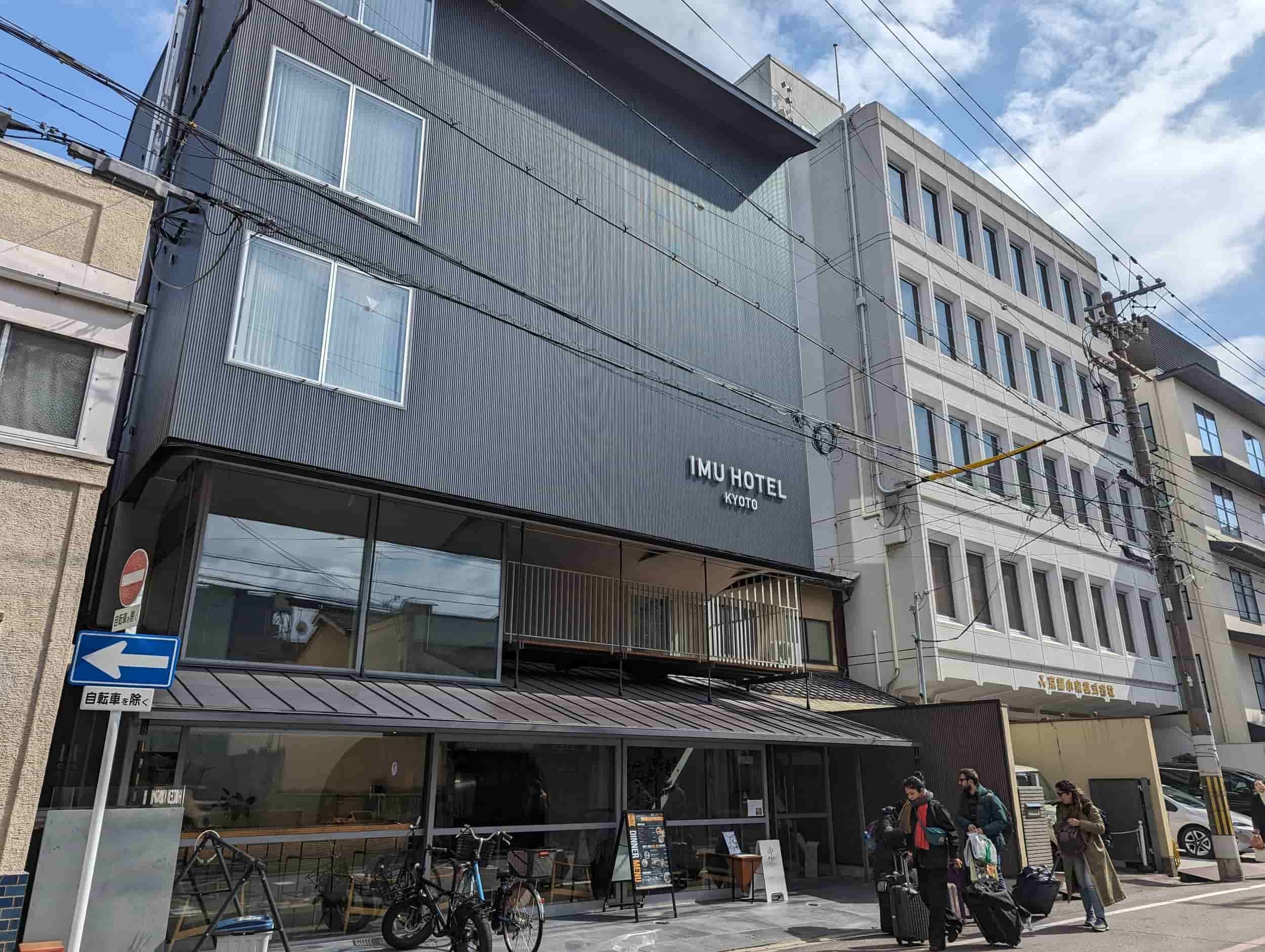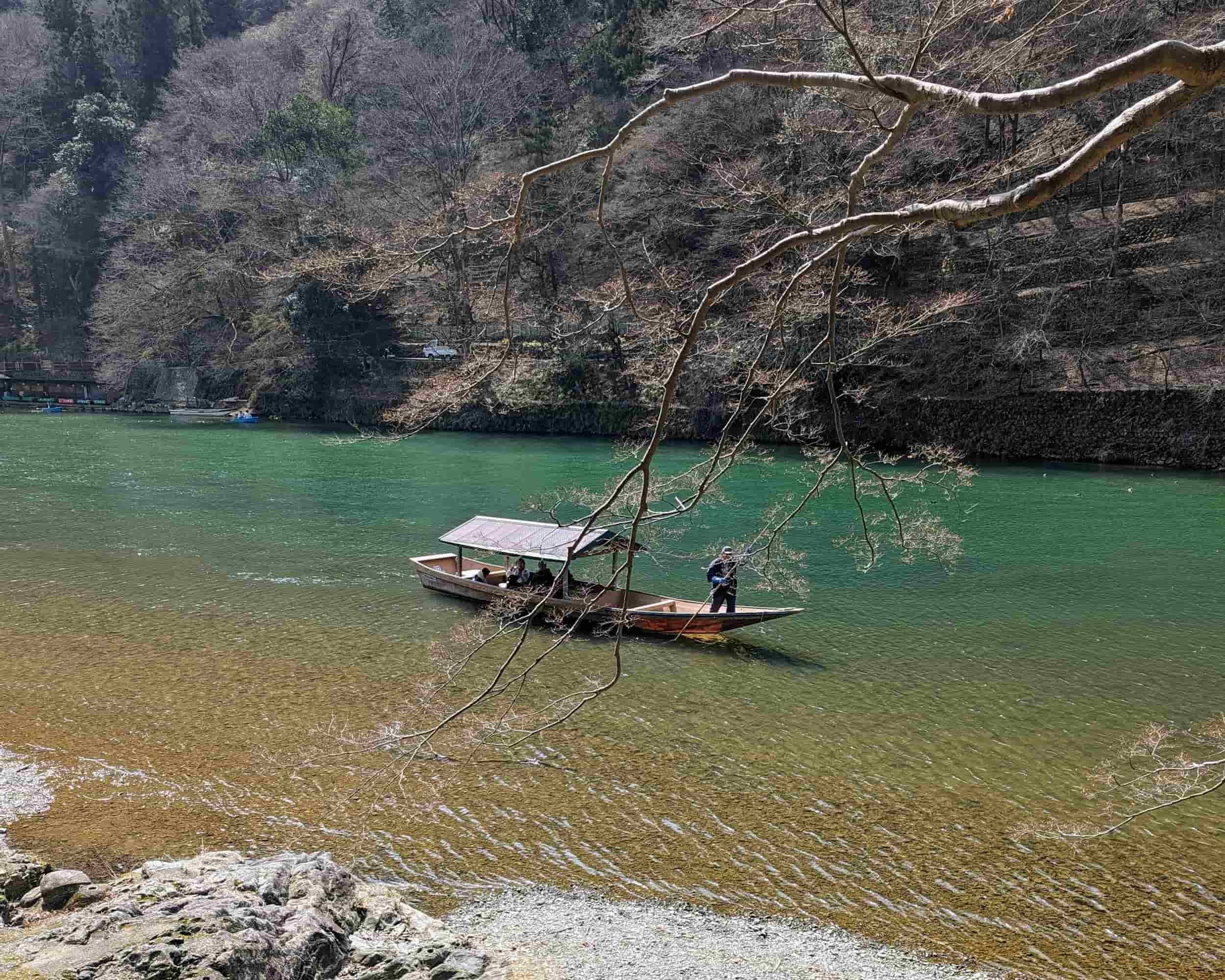The Digital Nomad Guide for Kyoto, Japan
Kyoto is not only a popular tourist spot - it is also getting quite some traction within the digital nomad community.
It’s easy to see why - there’s amazing food, so many gorgeous things to see and do, people are friendly, and the wifi is extremely fast. You have city but also nature, the weather is mostly good and there’s loads of cafes and spots to work from. Maybe Kyoto is the next DN destination?
I was there for a month in March and I had such a great time in Kyoto. Here’s my guide for Digital Nomads in Kyoto, Japan!
Quicklinks:
Things To Do
Visit all the different temples and shrines
There are so many shrines and temples in Kyoto that you could spend weeks visiting every single one of them. It’s said that Kyoto has roughly 2000 shrines and temples!
Some of the most popular ones are Fushimi Inari Shrine, the Golden Pavilion Temple and Kiyomizu-dera. Another beautiful temple is the Kenninji Temple and the Yasaka Shrine, both of which are close to the Gion area.
For something a bit more off the beaten track, visit Kifune and the Kifune Shrine, north of Kyoto.
Walk around the Gion and Sannanzaka neighbourhoods
Gion, Sannenzaka and Ninenzaka are famous areas in Kyoto. They’re known for their picturesque small streets, lined with traditional Japanese shophouses, restaurants and cafes.
Gion is known as the neighbourhood where Geisha’s live and work, so you can often find Geisha’s walking in these streets. However, recently tourists have been banned from some of the main Geisha streets as some have been harassing them, which is very sad to be honest. You can still walk some of the streets there, just take care that you stay in the allowed zones.
Visit Arashiyama and the Bamboo Forest
Of course, you can’t miss visiting Arashiyama and the world famous Bamboo forest. It truly is a marvelous place to visit. Try to get there early in the morning as it will get crowded in the afternoon (as with most popular sights in Kyoto). I found that in the morning it’s still quite manageable. If you want to really get away from the crowd, check out the Jōjakkōji Temple, which you can reach by walking a bit further from the main bamboo forest area.
I also recommend you to do the sightseeing train that you can get on from the station in the Bamboo forest itself.
Check out the Nishiki Market
The Nishiki market is a famous food market street in the centre of Kyoto. You can find loads of snacks, food and souvenir stalls in this covered market. Because it’s covered, it’s also a great place to visit in case it’s a rainy day.
Make sure to eat your purchased snacks right by the stall and not while walking - it’s frowned upon in Japan.
Day trips
Kyoto has the advantage of being very close to a lot of smaller (or bigger) cities and towns that are worthwhile to visit. For example, Nara, Uji and Osaka which are all around 20-30 minutes by train from Kyoto Station.
Do a Traditional Japanese Tea Ceremony
It’s such a zen experience to do a traditional Japanese tea ceremony and a fun activity to do while you’re in Kyoto as there are so many "Chaya” (teahouses). You will also get to learn all about how to brew the best tea and what are the Japanese customs around this beautiful tradition.
Here are a few that you can book via GetYourGuide:
⛩️ For the Full list of best things to do in Kyoto, check out my blog post on 5 Days in Kyoto, Japan: Things to do, see & eat ⛩️
Where To Eat
Kyoto has a lot of amazing food options and there’s lots to try in terms of Japanese cuisine. Here is a list of some of my favourite eating spots in Kyoto:
Japanese Cuisine
Kura Sushi, $, Sushi - For cheap but delicious sushi that is also a great experience, visit Kura Sushi. It’s super popular so be aware that you will need to wait a bit. You can go inside and get a number and then come back when it’s your time. You can also reserve via the app by the way, although you will need to use your Japanese skills or use a translation app.
Wajoryomen Sugari, $, Noodles - This is a Tsukemen place that is very popular, also among locals. Tsukemen are dry ramen noodle served with a broth separately. You then dip the noodles in the broth before eating. Come to this restaurant at opening time to avoid waiting in a long queue.
Charcoal-grilled Unafuji Daimaru Kyoto villa, $$, Eel (Unagi) - A restaurant that is located at the top floor of a department store in Kyoto city centre and serve delicious Unagi (eel) set meals.
Kyo-Machiya Kyoto Shijo Kuon, $$, Udon Noodles - Super tasty udon noodles which are served with a meat stew along with some Tempura. The noodles were home-made and so thick and chewy, it was delicious!
Yayoi, $, Set Meals - This is a Japanese “fast food” chain, that serves fresh set meals (it’s not really the greasy ‘fast food’ that we know in the west). The very affordable set meals come with fish or meat, rice (that you can fill up again at the rice machine!), vegetables and soups like miso soup. You order and pay at the machine at the front and give it to a staff member who will bring you to a table and bring you the food.
Ikkakuju Karasuma, $$, Okonomiyaki - A restaurant that makes authentic okonomiyaki, which is like a Japanese cabbage omelet. But trust me, it tastes much, much better than it sounds!
Cafes and Bakeries
Goodman Coffee Roasters - This was my favourite specialty coffee spot in Kyoto! The coffee is excellent and the staff amazingly friendly.
2/7 kitchen - A bakery that sells fantastic pastries and breads. The pain au chocolat were to die for!
WEEKENDERS Coffee - A specialty coffee stand that make top notch coffee. There’s very limited seating though, so you’ll need to sip your coffee standing.
Blue Bottle Cafe - A specialty coffee chain that serves very decent coffee here in Japan. There are various locations - I quite liked the one in Kiyamachi
☕ For more recommendations, check out my blog post on Best Specialty Coffee Places in Kyoto ☕
Western Cuisine
Shake Shack, $, Burgers - Shake Shack always has reliable, good quality burgers
Pizzeria Osteria e.o.e, $$, Pizza - A really nice Neapolitan pizza place in Kyoto
Convenience Stores “Konbini”
The convenience stores in Japan (called “konbini”) are known for their exceptional quality and their wide range of delicious snacks. There are quite a few brands of konbini in Japan, inlcuding 7 Eleven, Lawson and Family Mart. I often went to a konbini to grab lunch, for example a couple of onigiri or even a noodle dish. It’s cheap, convenient and the the taste is really good!
🍡 Check out my Instagram reel showing my favourite Konbini snacks!
Where To Work From
We didn’t really find any cool coworking space so we opted to work from some lovely cafes that we found. Japan has very fast internet in most places, so you can’t really go wrong with working at cafes.
My favourites where:
Stumptown Coffee Roasters - located within the Ace Hotel; here you can get coffee and then work from the long table in the hotel lobby. This was my favourite place to work from!
Schoolbus Coffee - They have two locations in Kyoto - I worked from the one near the Marutamachi metro stop. The coffee is good and they also have freshly baked bread and pastries. Another great place to work from.
COYOTE The ordinary shop - A great cafe with excellent specialty coffee; this place is located right behind the Kyoto Main station. There are also a few window seats that make a great spot for working from this cafe for a few hours.
The Bridge - This is a cozy place to work from and they also have lots of sockets. The coffee is decent but not the best I’ve tasted in Kyoto. It depends a bit on your coffee “snob-ness” level 😂
Another great option is working at a Blue Bottle cafe or even Starbucks if all else fails. You can often find locals working at Starbucks actually.
Where To Stay & Accommodation
During my month long stay in Kyoto, I stayed close to the Shijo metro station, in an area that is pretty much in the middle of Kyoto. From here, I thought it was really easy to reach different areas and sights to see in the city. It was just a 5 min ride from the Shijo metro station to Kyoto Station, which is the main station in the city.
I stayed at the IMU Hotel, which is a 3 star hotel. They also have a lobby/eating/working area which was great to work from. The rooms are cozy but a bit small, but that’s just Japan. In our price, breakfast was also included which was actually very good. Overall, I thought it was a great value for money for around 70 euros a night.
You can check the most up-to-date prices for this hotel here on Booking.com:
Sim Cards & Internet
Internet is Japan is extremely fast basically everywhere you go. In most hotels and cafes the internet speed was consistently more than 100 Mbps. I was quite surprised about the internet being so fast in the hotels, as usually the connection is quite bad in hotels.
For the 5 weeks I stayed in Japan, I opted to get a E-Sim card. The most convenient option is buying an E-Sim via the Saily app, which I’ve done for my stay in Japan. Simply download the Saily app and then purchase an E-Sim card via the app which you then easily install on your phone from there. However, do make sure that your phone is compatible with E-Sims before you buy one.
When To Go
Kyoto is wonderful to visit all year round but it does get quite cold in the winter months (End of November through March).
High season is in the autumn (September to November) when tourists flock to the city to see the beautiful autumn foliage, and the weather is still mild. Another popular season is spring, especially late March to beginning of April, when the cherry blossom trees are blooming.
The summer months can get quite hot, but you’ll also be able to enjoy a lot of cool events happening in Kyoto and all over Japan such as fireworks shows, open air markets and parades.
How To Get Around
The public transportation system in Japan is really good and there are many metro’s, buses and train that can take you literally anywhere. It’s also rather affordable.
For the metro you can get something called a Icoca card that you can obtain in most train stations. You can’t get this in any metro stop so make sure you go to a rather big train station where you will find ticket machines that can issue a Icoca card. You can top up this card easily at all metro stations afterward, though you will need cash to top up. This card can also be used for the bus and some local trains, but not for the bullet train (Shinkansen).
Biking is also pretty common in Kyoto as it’s a pretty flat city. In fact, we saw a lot of locals biking all the time, either biking to work or school. Some hotels offer bike rentals too - otherwise there are plenty of bike rentals available across the city.
Other than that, Kyoto is also very pedestrian friendly, so if you like walking, then it’s definitely a great city. I would say you can’t walk everywhere as some sights and temples are quite far.
Visa For Japan
Most Western passport holders can enter Japan for 3 months with a tourist visa, which is quite a lot of time to see the sights of Japan.
Recently, Japan also introduced a Digital Nomad visa that allows you to stay and work in Japan for 6 months, however this kind of visa can’t be extended, you would need to reapply. So if you’ve always wanted to live for a while in Japan then this is your chance! For this visa there are some requirements, such as minimum income and such. You can check more information about this kind of visa on this website.
Travel Insurance
Don’t forget to get a good travel insurance when you go on a digital nomad adventure. My go-to travel insurance, which is geared towards digital nomads, is SafetyWing. I think it has the best value for money and it’s really easy to use. Also, you can just buy while you’re already traveling and it’s subscription based, so you can cancel every month. Especially handy if you don’t know when you’ll be done traveling as a Digital Nomad.
Check out SafetyWing insurance prices here:
Final Thoughts on Kyoto as a Digital Nomad Destination
Strolling at one of my favourite places in the world: Fushimi Inari Shrine
Kyoto is a amazingly beautiful and historical city and I loved spending almost a month there. In terms of infrastructure for Digital Nomads I think there is definitely still some improvement potential as there aren’t really that many co-working or co-living spaces for instance.
There’s also not many Airbnb options for instance, so hotels are the way to go. I think especially now (at the time of writing) that the Yen is rather weak, I think it’s a great place for a month or so, as you can find affordable hotels that are quite suitable for Digital Nomads. Japan also has a 3 month tourist visa, which is quite long especially if you compare to other countries such as Indonesia or Thailand.
Kyoto and Japan in general are almost magical places and there’s lots to see, do and discover. The internet infrastructure is really fast and the public transportation is super efficient and affordable too.
So, if you haven’t been, I’d definitely recommend staying in Kyoto as a Digital Nomad for a while!
I hope this blog post has been useful for you! If you have any questions about Kyoto, let me know in the comments below!
Disclaimer: Some of the links in this article are affiliate links. This means that, if you buy through my links, I may earn a small commission that helps me create helpful content for the blog and it won’t cost you anything extra either, so it’s a win-win! I only recommend products if I think they will add value, so thanks for supporting Things Nomads Do!









